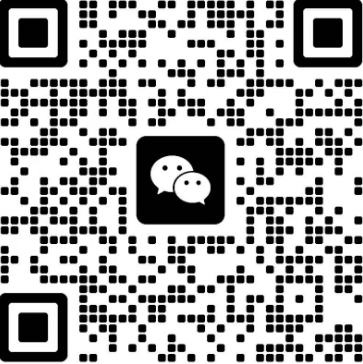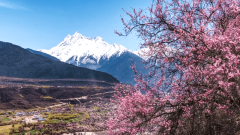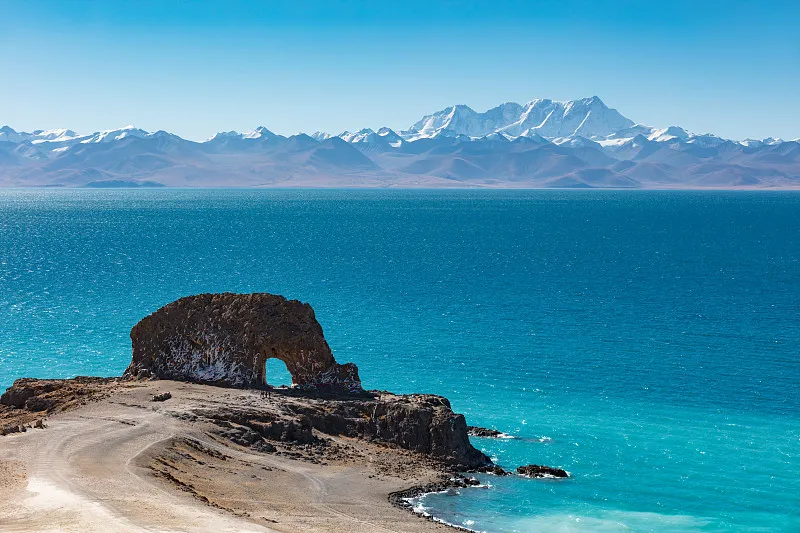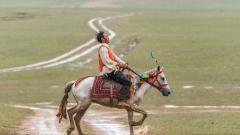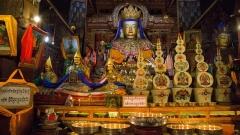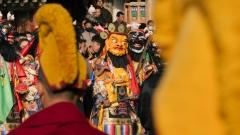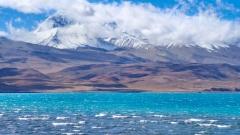If you’ve ever wandered the windswept streets of Lhasa or shared a meal in a Tibetan mountain home, you’ve probably encountered the warm, salty, and slightly creamy drink known as Tibetan butter tea. Loved by locals and intriguing to visitors, this unique beverage is more than just a drink—it’s a centuries-old tradition, a source of warmth in the harsh Himalayan climate, and a daily ritual woven into Tibetan life.
What Is Tibetan Butter Tea?
Tibetan butter tea, also known as po cha or yak butter tea, is Tibet’s signature drink. Survey after survey shows its popularity—over 70% of Tibetans choose it over other kinds of tea, often drinking it multiple times a day. For many families, it’s the first thing they taste in the morning, the drink they serve to guests, and a companion to meals and snacks.
At its core, butter tea is made by blending yak butter, strong brewed tea, and salt—sometimes with extra spices for aroma. The result? A beverage that’s savory like a light soup rather than sweet like typical tea.
The taste may surprise first-time drinkers—slightly salty, mildly creamy, and deeply warming. For locals, it’s as comforting as coffee might be for someone in the West.
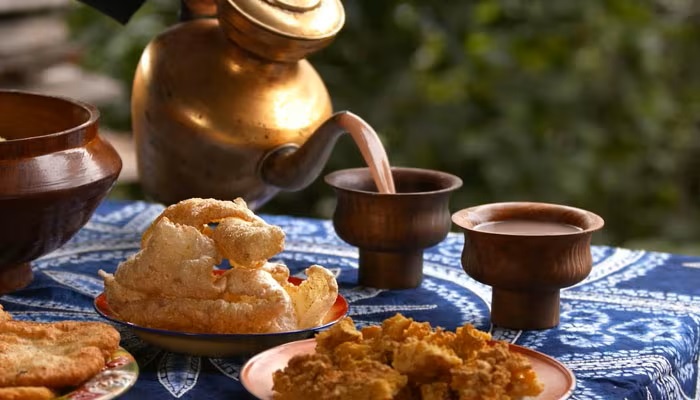
Yak Butter: The Heart of the Flavor
While cow’s milk butter is common worldwide, Tibetan butter is different—it’s made from the rich, slightly sweet milk of yaks or, in some regions, goats. Yaks thrive in Tibet’s high-altitude grasslands, producing milk with a distinct flavor that gives butter tea its characteristic richness.
Yak butter is everywhere in Tibet: in kitchens, in religious offerings, and, of course, in tea. For most Tibetans, when they say “butter tea,” they mean yak butter tea—the most prized version for its flavor and smooth texture.
Butter Tea vs. Sweet Tea – Two Tibetan Favorites
Visitors to Tibet often encounter two main types of tea: butter tea and sweet tea, each with its own history.
- Butter Tea originated on the Tibetan Plateau centuries ago, created to combat the extreme cold, high altitude, and limited availability of fresh produce. High in calories and healthy fats, it helps people stay warm and energized.
- Sweet Tea arrived later, introduced from India and Nepal in the early 20th century. Made with black tea, milk, and sugar, it became especially popular in Lhasa’s tea houses. It’s sweeter, lighter, and more familiar to international palates.
While tourists might find sweet tea more approachable at first, butter tea remains the more traditional—and culturally significant—choice.
Health Benefits of Tibetan Butter Tea
Tibetans are devoted to butter tea for good reason—it’s not just comforting, it’s functional. Here’s why locals (and adventurous visitors) love it:
- Fights Cold and Boosts Energy
High in calories and fat, butter tea acts like a built-in thermal layer, keeping the body warm in freezing weather. - Helps Acclimatize to High Altitude
Tourists often find that drinking butter tea eases symptoms of altitude sickness by providing hydration, warmth, and easily digestible energy. - Supports Digestion
Tea leaves help break down fats and aid digestion, especially important in a diet heavy in meat and dairy. - Protects Against Dryness
The fat content keeps lips and skin from cracking in Tibet’s dry, thin air. - Provides Vital Nutrients
In regions with limited vegetables and fruits, butter tea offers essential calories, fats, and some vitamins.
Note: While healthy for most, butter tea is not recommended for those with coronary heart disease, hypertension, diabetes, or arteriosclerosis.

The Traditional Way to Make Tibetan Butter Tea
Making butter tea the traditional way is a craft passed down through generations, especially among Tibetan nomads. Here’s how it’s done in the highlands:
- Extracting the Butter
- Fresh yak or goat milk is heated, then poured into a tall wooden churn.
- A long wooden plunger is pumped up and down hundreds of times until the milk separates into butter and buttermilk.
- The golden butter is skimmed off and cooled.
- Brewing the Tea
- Brick tea (compressed tea leaves) is boiled for hours until the liquid is dark, strong, and aromatic.
- Blending in the Butter Tea Churn
- The brewed tea is poured into a special churn with yak butter and salt.
- The mixture is pumped repeatedly until smooth and creamy.
- Serving Hot
- The tea is reheated and served in wooden bowls or cups, steaming and fragrant.
A Simple Butter Tea Recipe for Home
If you can’t travel to Tibet just yet, you can try a simplified version at home:
Ingredients
- 2 cups water
- 1 tablespoon black tea (or Pu’er tea)
- 2–3 teaspoons yak butter (cow’s butter works in a pinch)
- 1/4 teaspoon salt
Method
- Boil the water and add the tea. Simmer until strong and dark brown.
- Stir in the salt.
- Add the butter and blend (a small blender works well) until creamy.
- Serve immediately, piping hot.
For a twist, some people add milk, sugar, or even crushed nuts—but traditionalists keep it simple.
How Tibetans Drink Butter Tea – Customs and Etiquette
Drinking butter tea is more than a quick sip—it’s a cultural experience with its own etiquette.
- Always Served Full
A guest’s cup or bowl is never left empty. As you sip, your host will top it up. If you don’t want more, leave your cup untouched. - Don’t Drain the Cup
Traditionally, you should leave a little tea in the bowl before allowing it to be refilled. - Serve with Respect
The teapot is kept lower than the table when pouring, as a sign of humility and respect. - Paired with Tsampa
Tsampa—roasted barley flour—is often mixed directly into the tea to make a quick, nourishing snack.
For visitors, following these customs is a sign of respect and will likely earn you warm smiles.
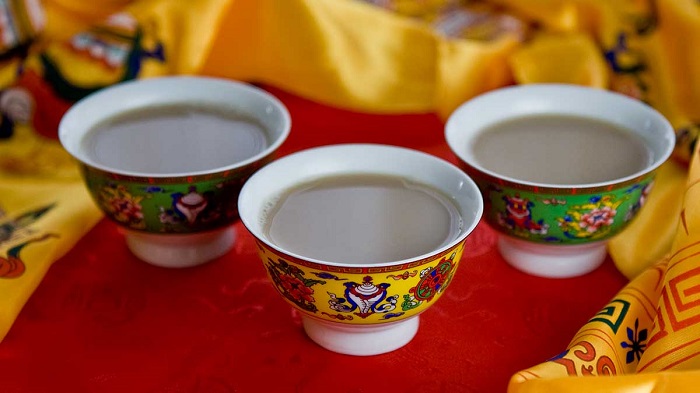
Where to Try Authentic Tibetan Butter Tea
While you can find butter tea in almost any Tibetan restaurant or tea house, the most authentic experience comes from sharing a cup in a local home.
- Lhasa Tea Houses: Great for a casual first taste.
- Nomadic Family Visits: Often included in guided tours, these let you watch butter being churned and tea being made the old-fashioned way.
- Monastery Guesthouses: Monks and pilgrims often share butter tea with visitors as part of religious hospitality.
A Traveler’s Tip: If it’s your first time, take small sips and give yourself time to adjust to the flavor. Many tourists go from “unsure” to “addicted” over the course of their trip.
Experience Tibetan Butter Tea with China Dragon Travel
If you’d like to go beyond just tasting butter tea—and actually watch it being made in a nomad’s kitchen—China Dragon Travel can arrange it. Our Tibet tours include opportunities to:
- Visit a local family in their yak-hair tent or village home
- Learn the traditional churning process
- Pair fresh butter tea with homemade tsampa
- Enjoy genuine Tibetan hospitality
Whether you’re trekking in the Himalayas or exploring Lhasa’s vibrant streets, butter tea offers a window into Tibetan culture that you simply can’t miss.
Tibetan butter tea is more than a drink—it’s a symbol of endurance, hospitality, and heritage. From the high pastures of nomads to the bustling tea houses of Lhasa, it remains a daily ritual for millions and an unforgettable experience for travelers. Try it once, and you’ll forever associate its warmth with the spirit of Tibet.

